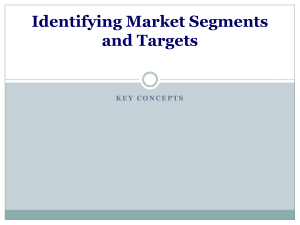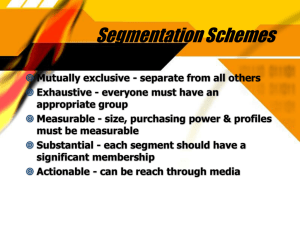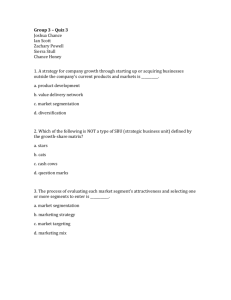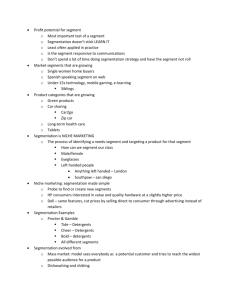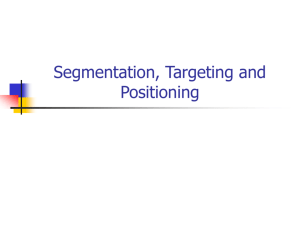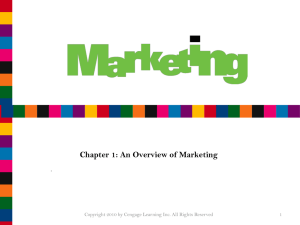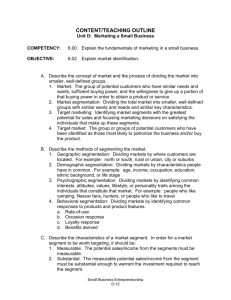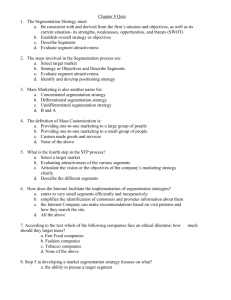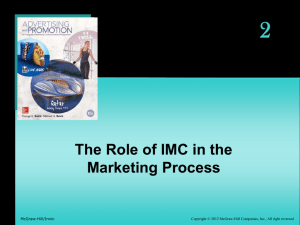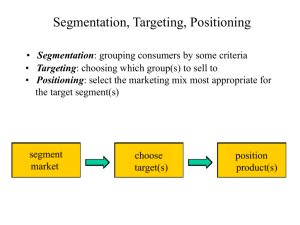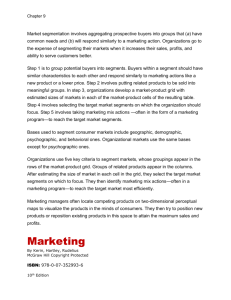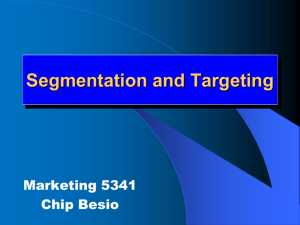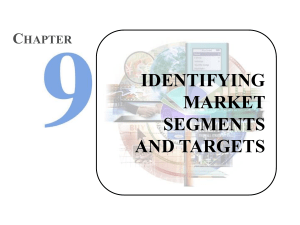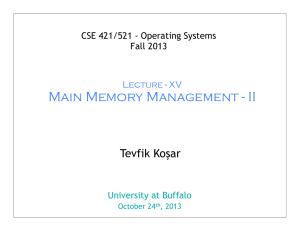Marketing Portfolio Assign #21
advertisement
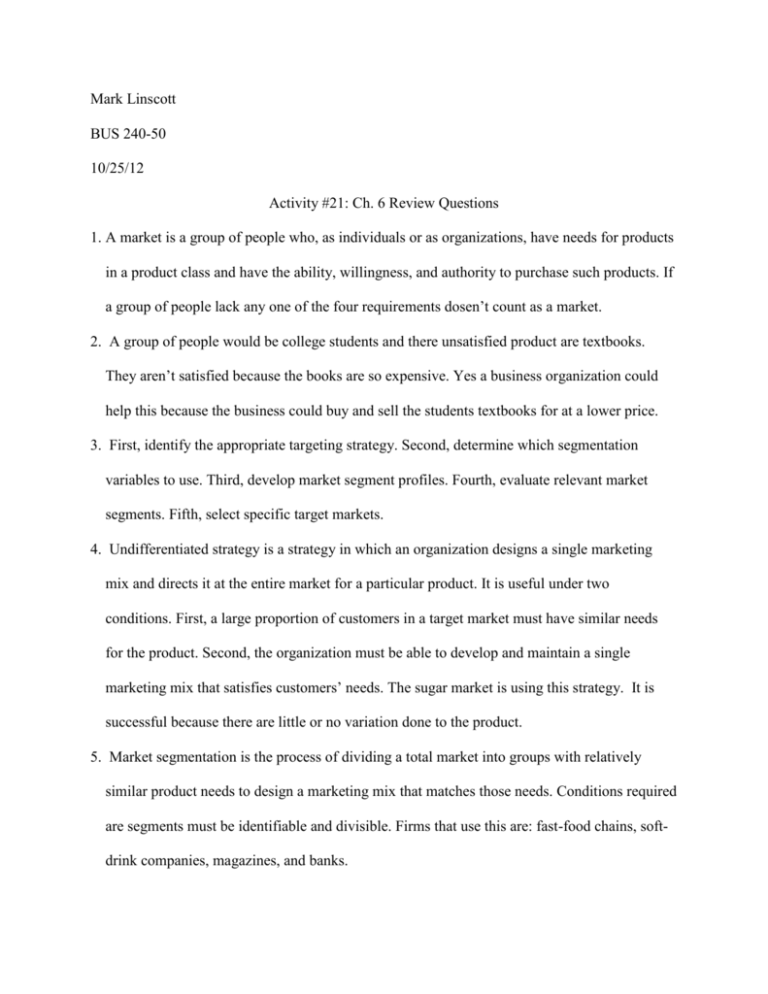
Mark Linscott BUS 240-50 10/25/12 Activity #21: Ch. 6 Review Questions 1. A market is a group of people who, as individuals or as organizations, have needs for products in a product class and have the ability, willingness, and authority to purchase such products. If a group of people lack any one of the four requirements dosen’t count as a market. 2. A group of people would be college students and there unsatisfied product are textbooks. They aren’t satisfied because the books are so expensive. Yes a business organization could help this because the business could buy and sell the students textbooks for at a lower price. 3. First, identify the appropriate targeting strategy. Second, determine which segmentation variables to use. Third, develop market segment profiles. Fourth, evaluate relevant market segments. Fifth, select specific target markets. 4. Undifferentiated strategy is a strategy in which an organization designs a single marketing mix and directs it at the entire market for a particular product. It is useful under two conditions. First, a large proportion of customers in a target market must have similar needs for the product. Second, the organization must be able to develop and maintain a single marketing mix that satisfies customers’ needs. The sugar market is using this strategy. It is successful because there are little or no variation done to the product. 5. Market segmentation is the process of dividing a total market into groups with relatively similar product needs to design a marketing mix that matches those needs. Conditions required are segments must be identifiable and divisible. Firms that use this are: fast-food chains, softdrink companies, magazines, and banks. 6. Concentrated strategy is a market segmentation strategy in which an organization targets a single market segment using one marketing mix. Advantage is that it allows a firm to specialize. Disadvantage is that if a firm penetrates one segment and becomes well entrenched, it’s popularity may keep it from branching out into other segments. A differentiated strategy is a strategy in which an organization targets two or more segments by developing a marketing mix for each segment. An advantage is that because the sale of products to additional segments may absorb excess capacity. A disadvantage is that this strategy demands more production processes, materials, and people. 7. Demographic, geographic, psychographic, and behavioristic variables. Demographic- age, gender, and race variables. Geographic- region, city size, and climate variables. Psychographic- personality attributes, motives, and lifestyles variables. Behavioristic- volume usage, end use, brand loyalty. 8. Geographic location, type of organization, customer size, and product use are the dimensions that segment business markets. 9. Geodemographic segmentation is a method of market segmentation that clusters people in zip code areas and smaller neighborhood units based on lifestyle and demographic information. Gyms and restaurants use this because it helps show them where they might want to open their business based off these numbers. 10. A market segment profile describes the similarities among potential customers within a segment and explains the differences among people and organizations in different segments. It is important because it helps marketers understand how a business can use it’s capabilities to serve potential customer groups. 11. Sales estimates, competition, and estimated costs are a few. 12. Because the market potential places absolute limits on the size of the company’s sales potential. 13. Identifying the right target market is the key to implementing a successful marketing strategy. 14. Product positioning is creating and maintaining a certain concept of a product in customers’ minds. Head-to-head is good if the product’s performance characteristics are at least equal to the competition. It should be avoided when the characteristics do not differ significantly from competing brands. 15. A sales forecast is the amount of a product a company expects to sell during a specific period at a specified level of marketing activities. It is important because the success of numerous activities depends on this forecast’s accuracy. 16. The two primary types are customer forecasting survey and sales force forecasting survey. A company would use an outside expert forecasting survey when they want experts to prepare and present forecasts or answer questions regarding a forecast. 17. It is useful for forecasting sales of new products or sales of existing products in new geographic areas. Advantage is it gives a marketer an opportunity to test various elements of the marketing mix. A disadvantage is that these tests are often time consuming and expensive. 18. When the product is sold to different market segments.


